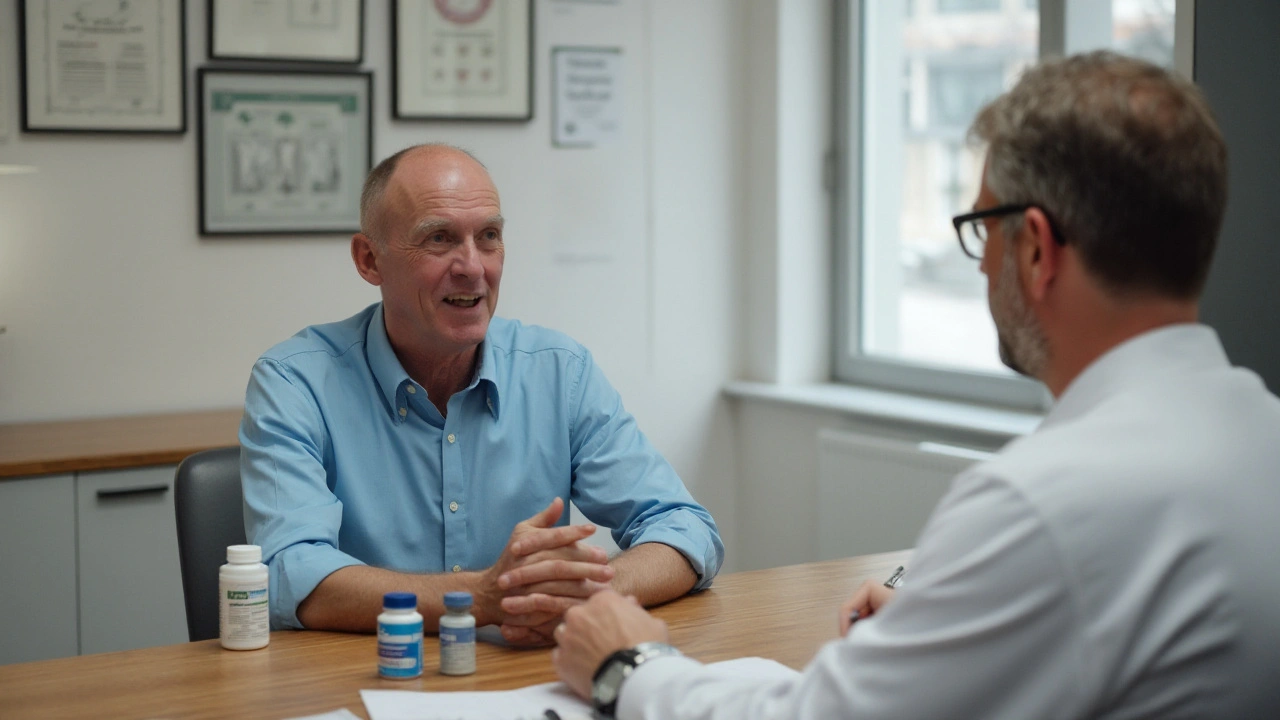Propecia alternatives: real options for hair loss
If Propecia (finasteride) isn't right for you, there are several effective alternatives to consider. I'll list medical options, topical choices, procedures, and natural approaches so you can weigh benefits and risks before talking to your doctor.
Prescription alternatives
Dutasteride is a prescription pill that blocks DHT more strongly than finasteride. It often works faster and may give better results for some men, but it can cause similar sexual side effects and stays in the body longer. Oral minoxidil is another prescription option - low daily doses can thicken hair, though it can raise heart rate or cause fluid retention. For women, spironolactone or topical anti-androgens are used instead of finasteride because they affect hormones differently.
Topical finasteride mixes try to limit systemic exposure by applying medicine to the scalp. The idea is to get the anti-DHT effect where you need it while lowering the risk of whole-body side effects. Talk with a dermatologist because formulations and evidence vary.
Non-pill treatments and procedures
Minoxidil foam or solution is the most common over-the-counter option. It doesn't block DHT but can reopen smaller follicles and slow hair loss. Combine minoxidil with a prescription drug when possible - combos often work better than one treatment alone. Low-level laser therapy (devices that deliver red light) can stimulate growth for some people, and platelet-rich plasma (PRP) injections use your own blood factors to boost follicles. Hair transplant surgery moves healthy follicles to thinning areas and gives the most visible, long-term improvement if you're a good candidate.
Shampoos with ketoconazole can reduce scalp inflammation and DHT locally; they're supportive, not sole solutions. Topical caffeine and certain peptides show early promise but lack strong long-term data.
Natural options like saw palmetto, pumpkin seed oil and zinc are popular. Evidence is mixed: some users notice benefit, others don't. These supplements are gentler but usually less powerful than prescription drugs. If you're trying natural DHT blockers, watch for interactions with other medicines and pick products from reputable brands.
Lifestyle changes matter. Poor sleep, high stress, smoking, and a diet low in protein and iron can worsen hair loss. Improving sleep, managing stress, eating a balanced diet, and avoiding harsh styling give any treatment a better chance to work.
Expect to wait at least 3-6 months to see visible change, and up to a year for full effect. Keep using treatments as prescribed; stopping reverses gains. Monitor side effects like mood changes or sexual symptoms and report them early - your doctor can adjust dose or switch options to limit problems.
How to choose: list your priorities - speed, safety, convenience, desire to avoid steroids or hormones - then discuss options with a dermatologist. Expect trial and error: what works for one person may not for another. Track photos every month so you can judge progress.
Bottom line: there's no single best alternative to Propecia. Dutasteride, topical treatments, minoxidil, procedures, and natural DHT blockers all have roles. Get medical advice to match the option to your goals and health profile.
Top 5 Propecia Alternatives for Hair Loss in 2024
Exploring the top alternatives to Propecia in 2024, this article delves into various treatments for hair loss, each with unique benefits and drawbacks. From medications like Rogaine and Avodart to therapies like PRP and LLLT, and even surgical options such as hair transplants, find the right solution for your needs. Understand the effectiveness, side effects, and financial implications of these alternatives. Whether you're seeking drug-based treatments or a more natural approach, discover effective methods for combating hair loss.

